“Sad….it’s very sad”, said our Casa Particular* owner when she told us of Fidel Castro’s passing. On November 25, Cubans lost the only leader that most had ever known. His death produced a profound sense of loss for many Cubans, and a hope for something new and different for others.
When Fidel’s death was announced, we found ourselves in Santiago de Cuba, the nation’s second largest city which is located on the far eastern end of the island. It is a city rich with the history of Cuban revolutions, and it is the city from which Fidel called home. He stated previously that he wanted to be buried in Santiago along side of other men who died fighting in the revolution.

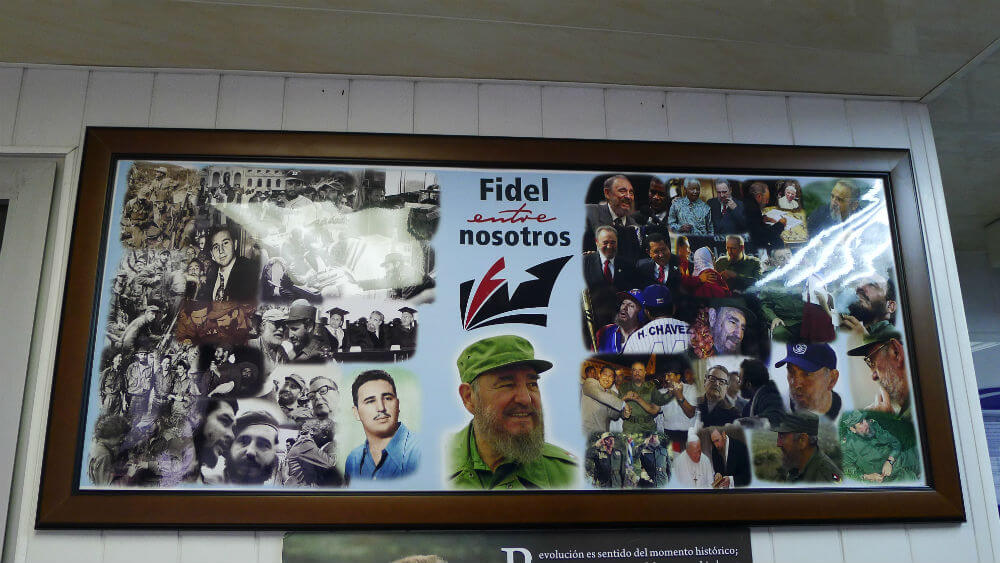
On the first day after his death, the flags were lowered to half mast, and a 9 day period of mourning was announced—no festivals or cultural activities can occur during this special period of luto*. Bad luck for the tourists visiting the island hoping to hear salsa music and buy bottles of rum. The evenings are silent in Cuba for the period of mourning.
Round the clock television coverage began. The coverage offered a variety of people and personalities reminiscing about Fidel mingled with historical footage of his nearly 50 years in power. After Queen Elizabeth II, Fidel was the longest reigning political leader on the planet.
The early film footage on TV showed his triumphant entry into Havana having vanquished Batista, the dictator he replaced. Other early leaders of the revolt figured prominently in the footage: Ernesto “Che” Guevara, Camilo Cienfuegos and Raul Castro. Camilo Cienfuegos was the most popular with the Cuban people, however he died in 1959 when his plane crashed into the ocean. Neither the wreckage nor his body were never found. Some conspiracy theorists say Fidel had him killed as Cienfuegos’ popularity was a threat to Castro.
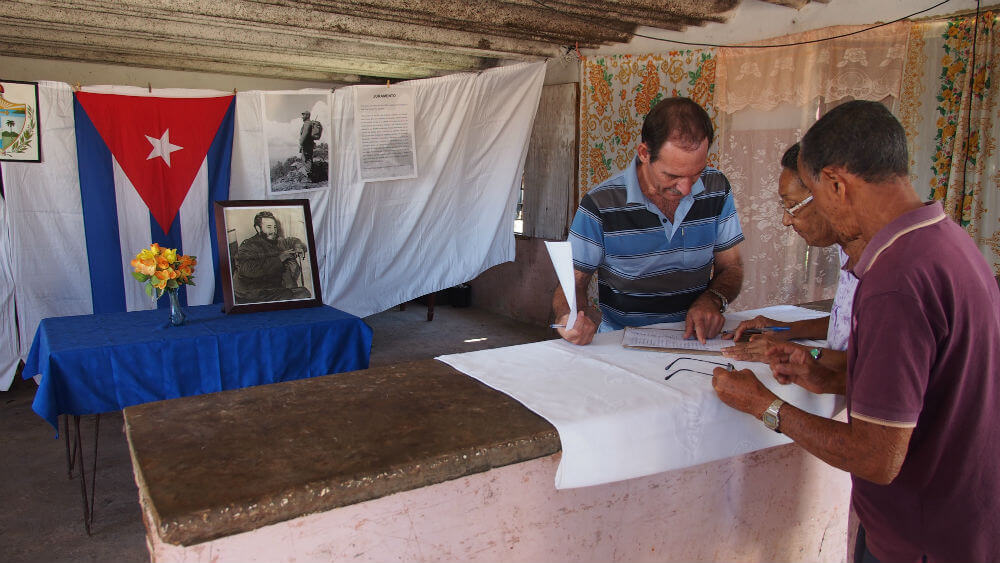
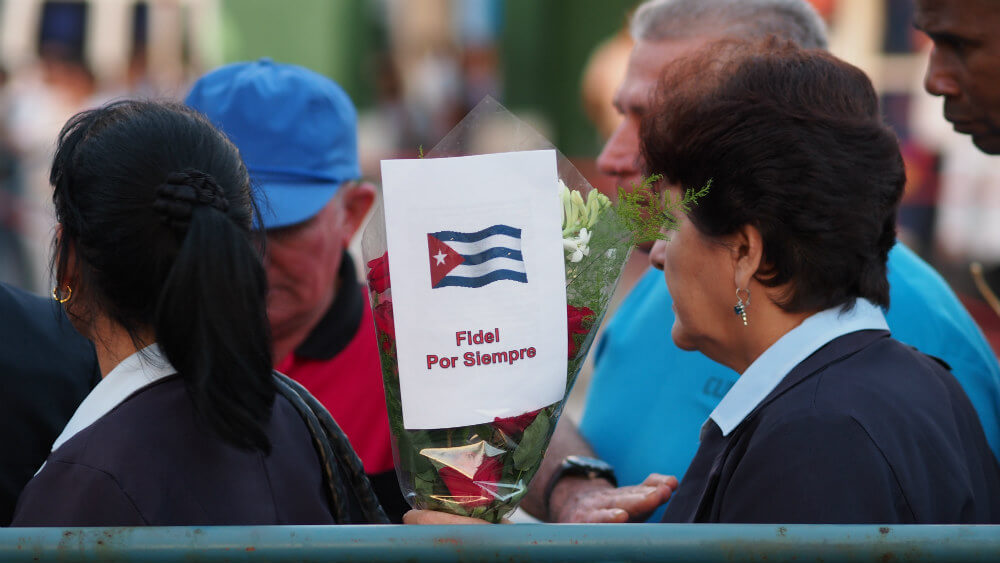
A doctor from Argentina, Che Guevara became an international celebrity and nearly as famous as Fidel. He was installed as the Minister of Industry and head of the Cuban Bank, positions for which he had no special skills. He grew restless and departed Cuba for Africa and then to Bolivia, where he hoped to foment another revolution. His timing and strategy were a fiasco. He was caught and executed by the Bolivian army, along with help from the C.I.A., in 1967. Since then, his image and myth have grown to global proportions, and the Alberto Korda photo of Che is perhaps the most reproduced photograph in history.
On this first day of the 9 day period of mourning, Myo and I wanted to do something to acknowledge the historical moment, yet little was happening in Santiago de Cuba. We heard that Castro’s body would be brought across the country by caravan to Santiago for burial. We decided to visit the Santa Ifigenia Cemetery which would be the likely final resting place for Fidel. It also is where other famous Cubans are buried, such as the revolutionary leader, José Marti and Segundo Compay of Buena Vista Social Club fame.
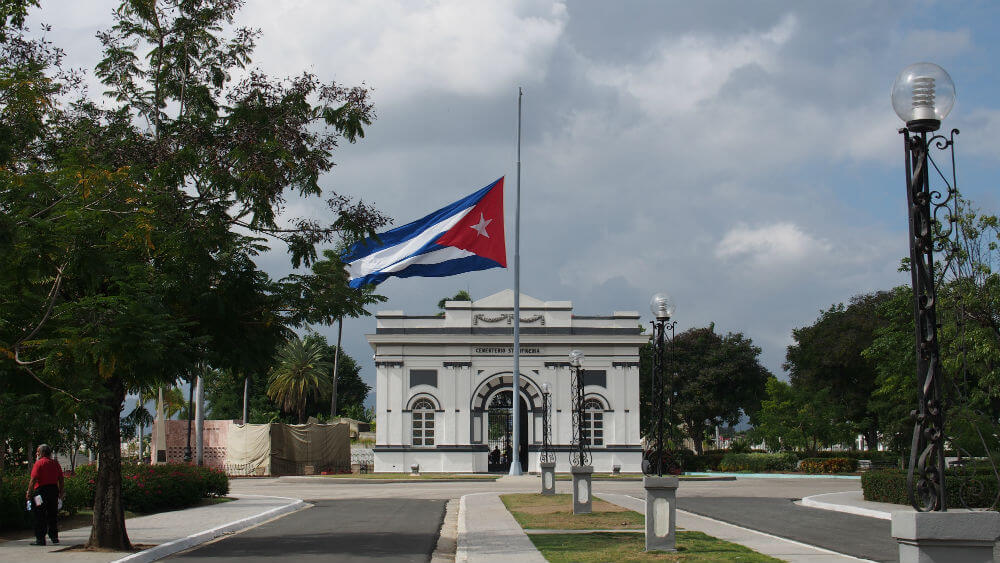
(The early reports we heard were erroneous. Fidel was cremated shortly after his death. The special wooden box containing his ashes is being carried in a caravan, making its way across the country, stopping in all of the provincial capitals, with the date of internment in Santiago set for December 3, 2016. This route from Havana to Santiago is the reverse of the revolutionary march which Castro and his soldiers made in 1958.
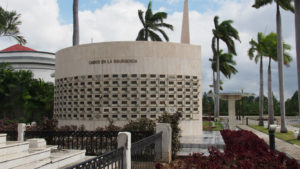
We walked 30 minutes from the center of Santiago to the cemetery, a grand stretch tombs, graves, and brilliant white mausoleums reflecting the bright midday sun. A number of tourist buses had brought cruise-going tourists for a city tour. Each guide for these groups held a numbered red round placard so that the tourists would remain in their designated group. We followed one group to eavesdrop on the guide’s informative talk.
The pantheon to Jose Marti is large and imposing, a 3 story structure in which one enters to see the wooden case holding Marti’s ashes. A three soldier honor guard stands watch. We arrived as the guard was changing. I pointed out what was happening to Myo (as most of the cruise tourists blocked our view) but she heard my words as they were “changing the cigars”, not that they were “changing the guards”. “Why are they changing cigars” she asked me? We laughed as her question was not completely out of the blue; I had been shopping for cigars during our time in Cuba.
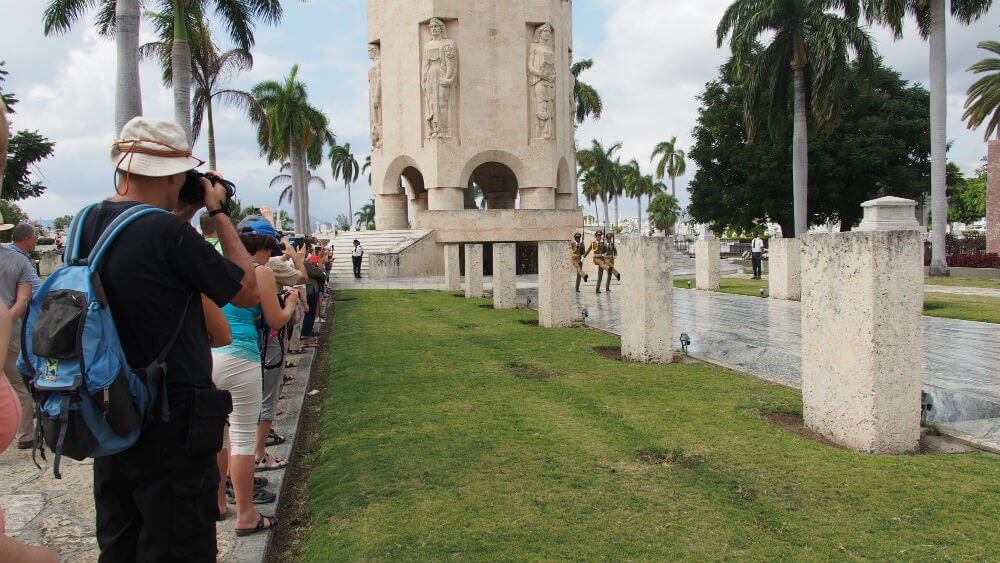
© Benjamin Porter
The question no one would answer for us is where in the cemetery Fidel would be buried. Cemetery employees either did not know or did not want to tell us. This secrecy is not surprising in a country in which there is no freedom of the press and the media is government controlled. Even in his death, Fidel was in control of his image and myth.
However, we noticed huge khaki colored curtains obscuring an area close to the cemetery entrance. It looked to be a temporary construction and it blocked the view of something. We approached it but were waved away by guards. Asking if this could be where Fidel’s ashes would be placed, they would not answer. A small group of people were meeting close to area and even if we had been allowed to approach them, it is unlikely they would have let us in on the secret.
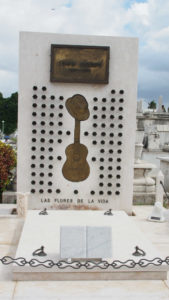
Before leaving the cemetery, we wanted to pay our respects to another great Cuban, Compay Segundo, the musician made famous to US audiences by Ry Cooder and the Buena Vista Social Club.
Over the next few days day, we asked Cubans how they felt about Fidel’s death. Nearly all expressed sadness at his passing. They also noted that leaders from around the world were coming for the ceremony or sending condolences. For a small nation, Castro’s Cuba, carried an disproportionally large weight in world events. He delighted in being the thorn in the side of the US and outlasting 11 US Presidents. Even when Obama made his historic visit to Cuba this year, Fidel was still voiced his disapproval of working with the enemy to the north in a piece published in the party newspaper, Granma.
On November 28 & 29, the nation had the opportunity to pay respects to Fidel. In countless ceremonies across the island, people lined up to walk by a large photograph of Fidel surrounded by funeral flowers and then sign a registry of condolences. We witnessed this in a small fishing village of Gibara and also in Holguin which is the third largest city in Cuba.
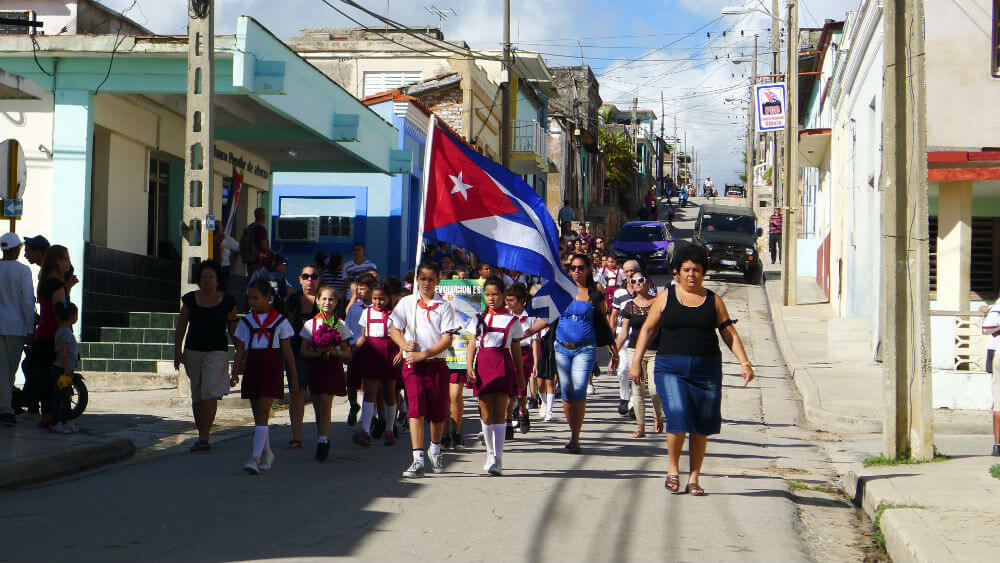
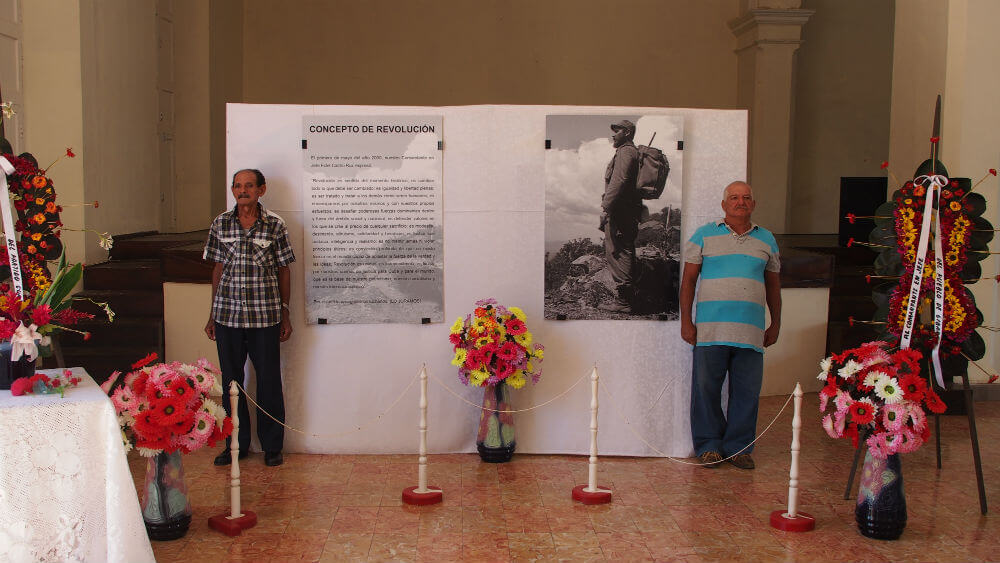
In Holguin, the lines stretched for blocks and people waited for three hours or longer for a chance to say farewell to Fidel. A few black armbands were evident but in general we did not see people wearing black. It was explained that in Cuba, people were asked to dress less colorfully, more discreetly, but that was hard to discern. It is an island rich with color, and the people’s attire reflects that.
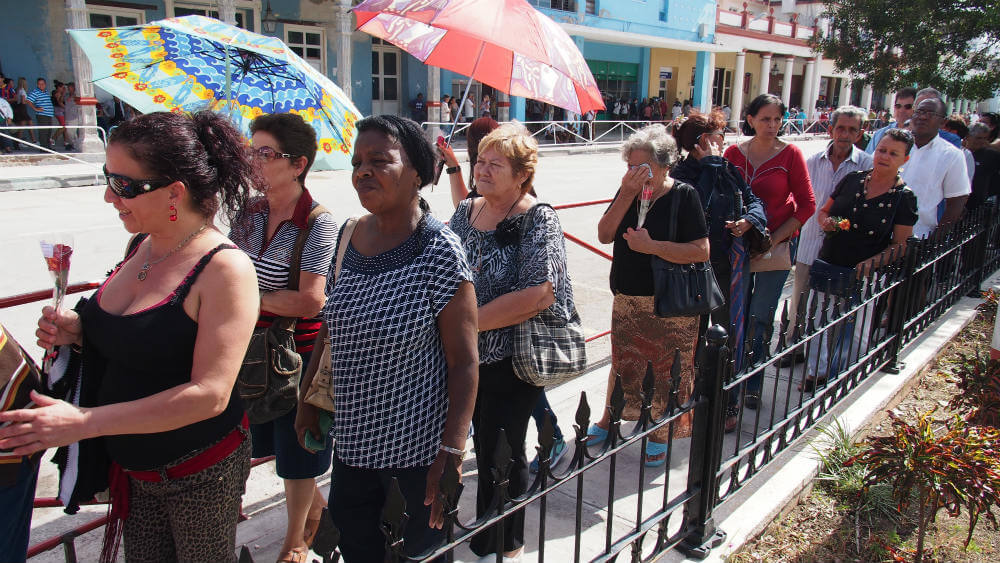
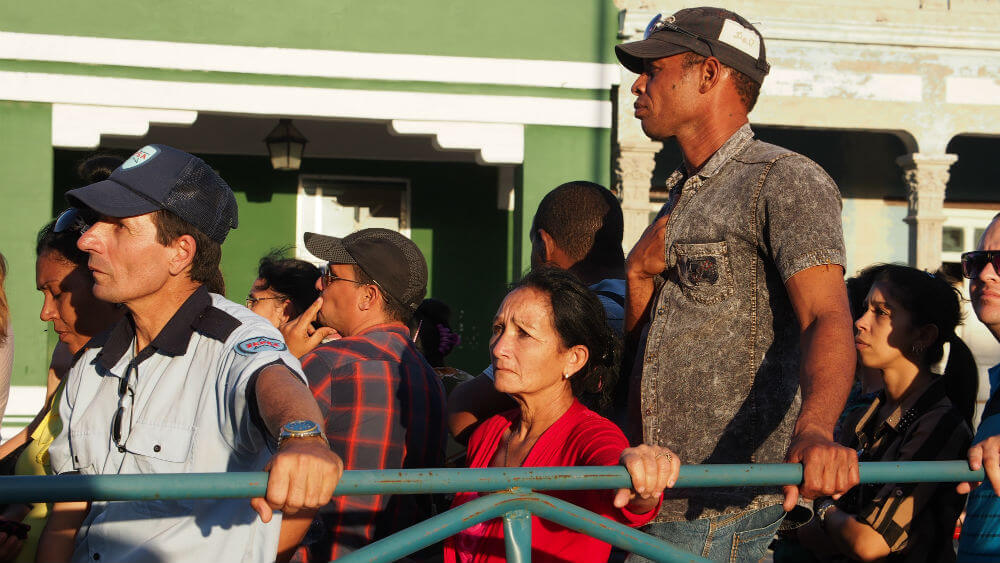
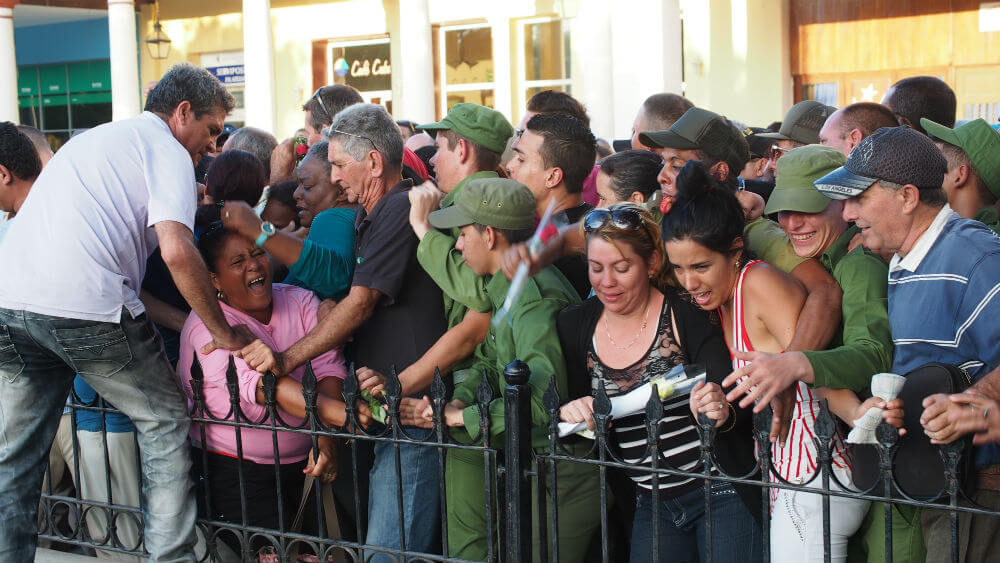
How do Cubans feel about his passing? It is naïve to generalize but of the people we spoke with most were sad and reflective. Fidel is the only leader of the country that 80% of Cubans have ever known. Though he relinquished power to his brother in 2008, Fidel looms large in the Cuban psyche. As the principal leader of the Cuban revolution, the adulation and respect will continue after his death as well.
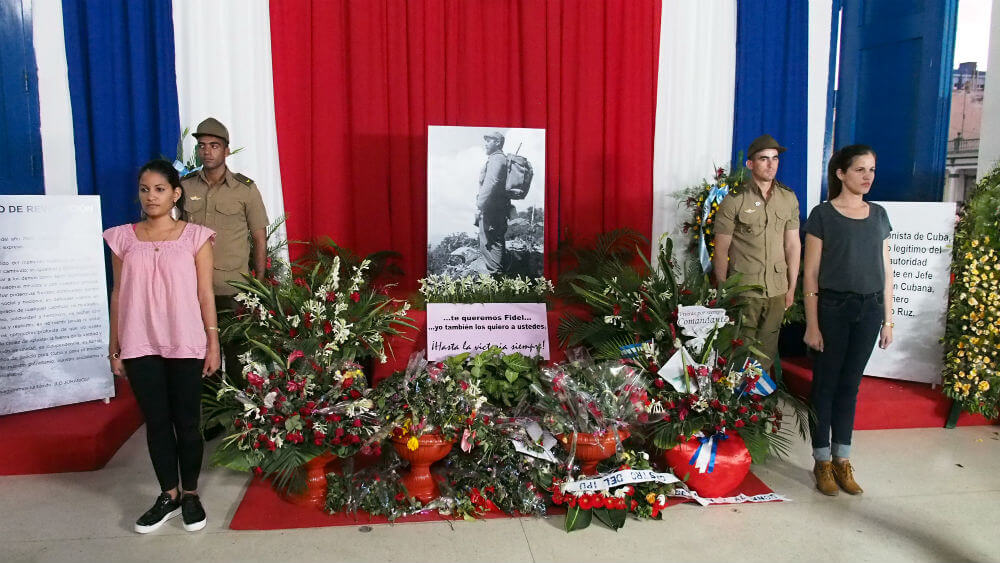
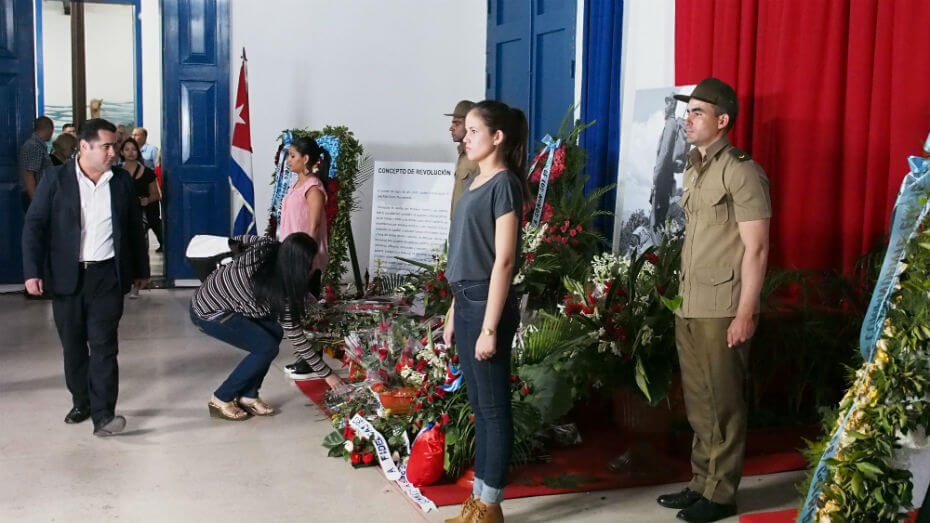
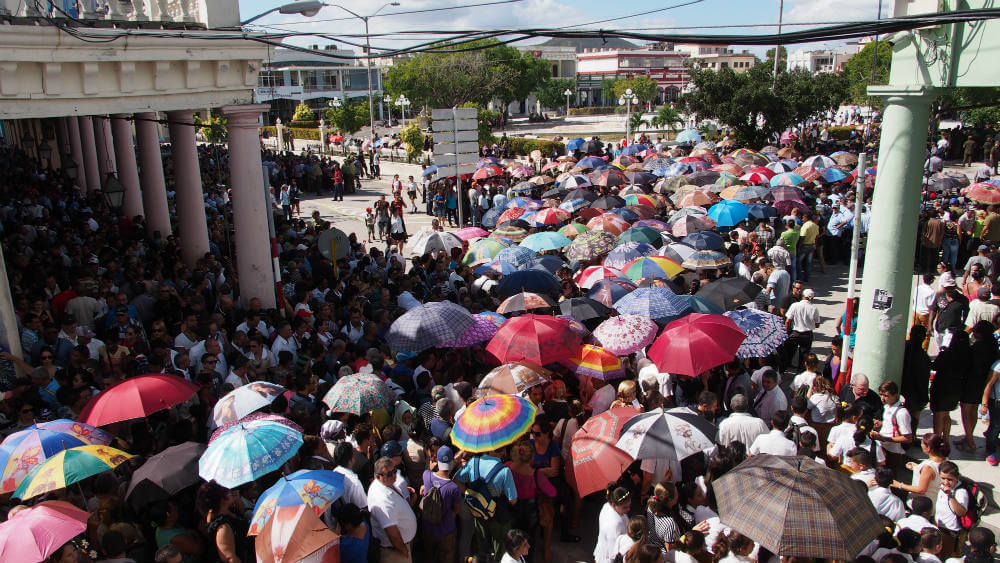
The sadness and occasional tears seen on the people’s faces was authentic. Perhaps the looks also express a worry of an unknown future with a new US President elect who has promised to end the opening of relations which President Obama nurtured.
Certainly, not all Cubans are sad at his passing. In Miami, Cuban exiles celebrated his death. We observed a few small acts of unpatriotic behavior such as a restaurant where the TV was tuned to a music video channel instead of the non-stop Fidel coverage. To find out if much unpatriotic sentiment exists on the island is difficult. The intelligence apparatus of the state is ever present and people speak only in whispers, if an opinion goes against the party line.
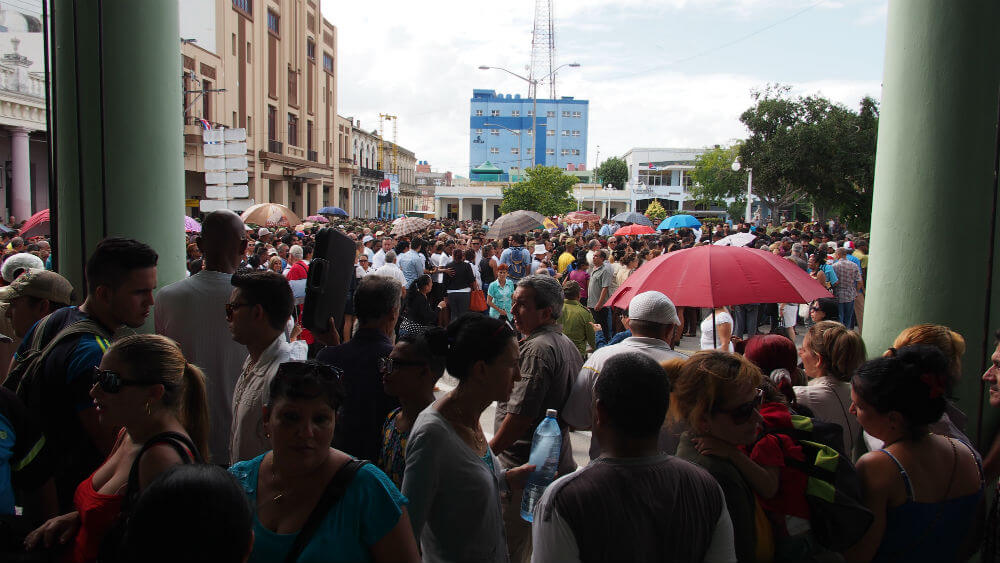
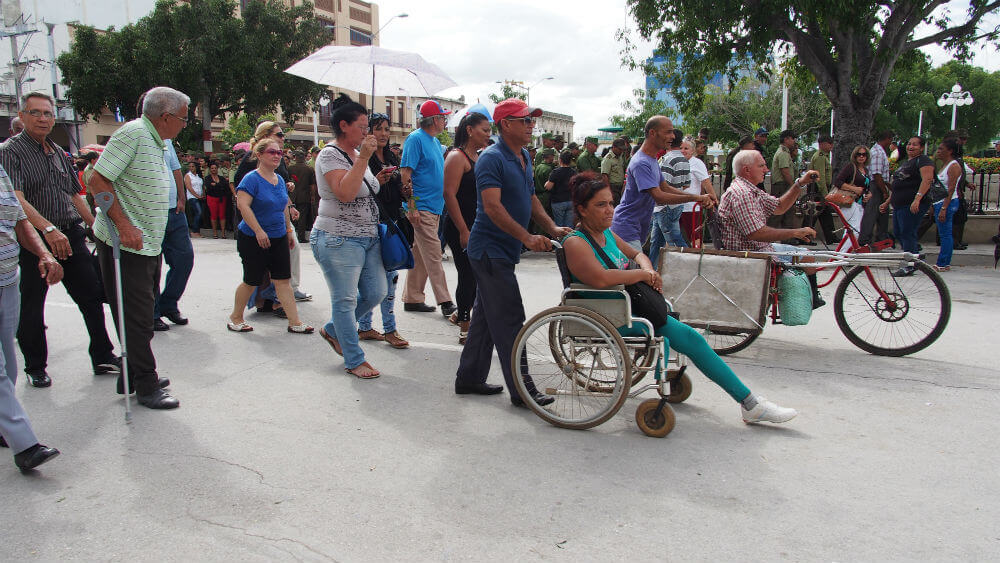
One taxi driver, a practicing Quaker—his taxi is a horse drawn buggy—spoke of how Fidel had attacked religion and churches across the island, and for that reason he was fine with Fidel’s death. He explained how the young people in today’s Cuba are very frustrated by the economy and lack of opportunity for jobs. Many want to leave the country he said. We met another taxi driver who had tried to sail to Florida, however the US Coast Guard intercepted him and set him back. He will try again, he told us.
Indeed, there is an apparent generational divide regarding opinions of Fidel. The youth are ready to move on and given the chance, many would leave the country for anywhere offering better opportunities. In the line of people waiting to express condolences in the village of Gibara, there were very few young people. In Holguin, the 3rd largest city on the island, the demographic was much more evenly distributed across all age groups.
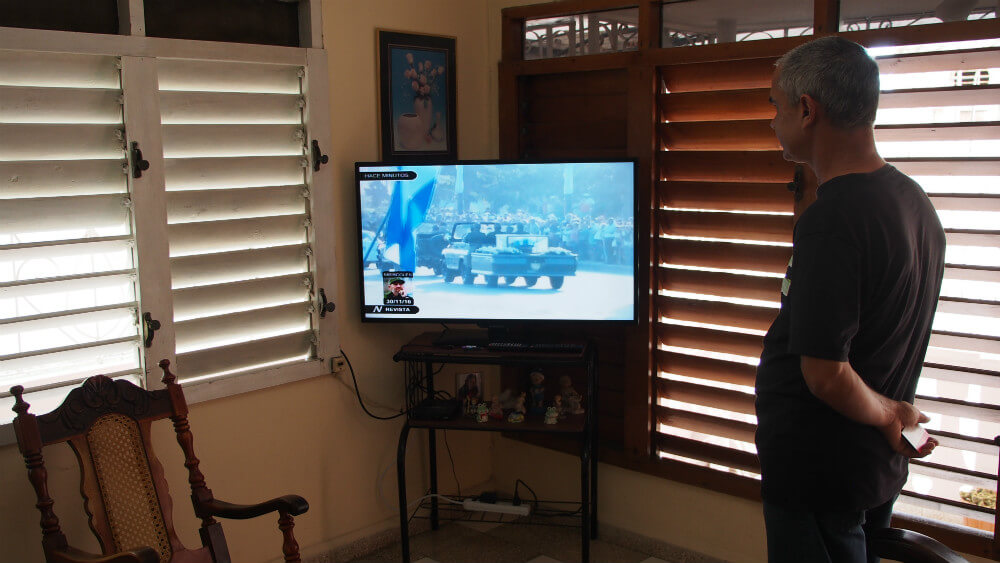
Now, the flag draped wooden box containing Fidel’s ashes has made its way across the island. The journey passed thousands of flag waving Cubans and ended at the Santa Ifigenia Cemetery in Santiago. What will change now that Fidel is gone? One casa owner shook his head and said “Nothing…..nothing will change” to which he added, “Raul already made changes since Fidel stepped down. We like things about our system, such as free health care and free education. We don’t want to give those things up.”
- *Casa Particular is the Cuban term for a privately owned B&B.
- *Luto is the Spanish word for mourning.
Upcoming Tours
Vietnam & Cambodia Feb. 11 – 27, 2017
Cuba Nov. 8 – 19, 2017
Nicaragua Oct. 25 – Nov. 5, 2017
